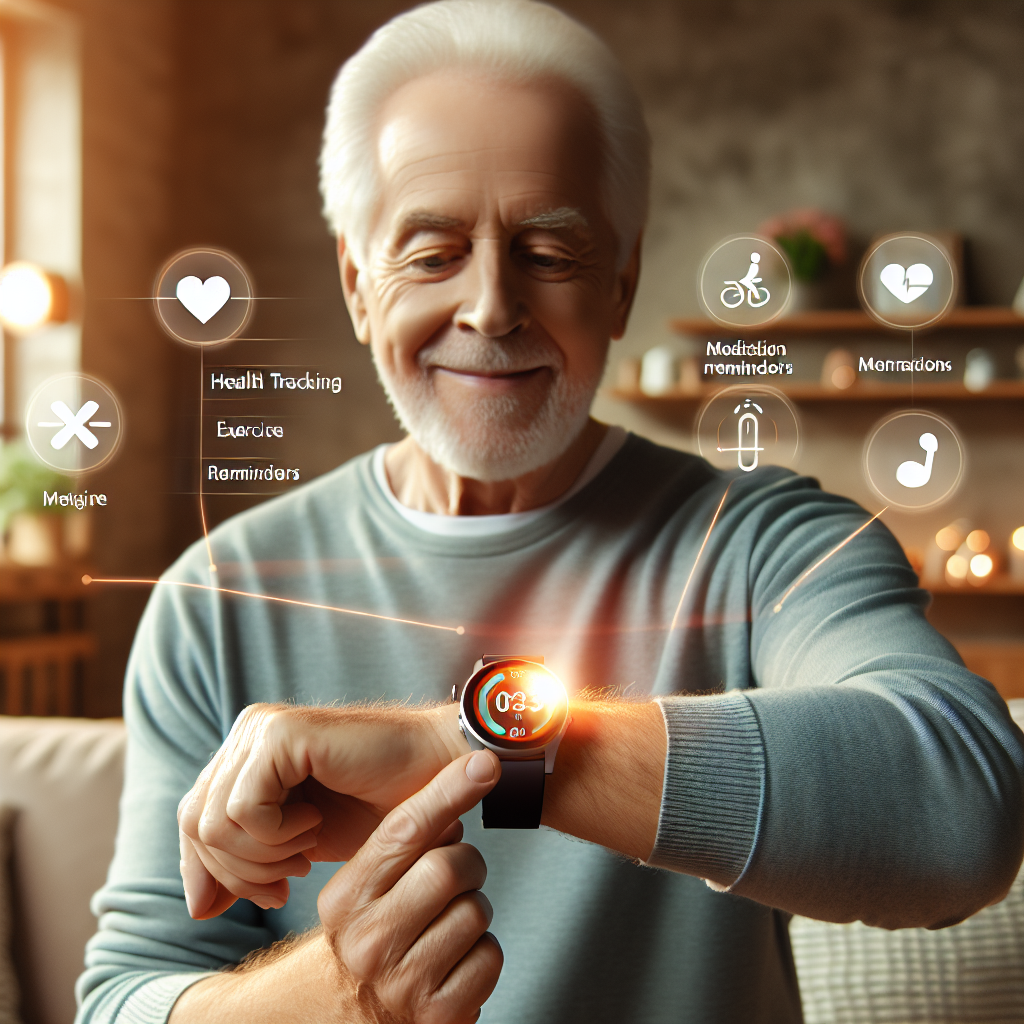Transforming Retirement Life with Smart Homes
Imagine waking up to a home that knows exactly what you need before you even ask. For an increasing number of tech-savvy seniors, this isn’t science fiction—it’s their daily reality. “Aging in place” has become more than just a buzzword; it’s a lifestyle choice embraced by those who value their independence but appreciate a helping hand. Smart home systems are revolutionizing retirement life, enabling seniors to maintain autonomy while enjoying enhanced safety and comfort. From voice-activated assistants that control lighting and temperature to sophisticated security systems that monitor for falls, these technologies are transforming ordinary homes into supportive environments that adapt to changing needs. “My smart home gives me confidence to live on my own,” says 73-year-old Robert, who installed a comprehensive system after his wife passed away. “The peace of mind it gives my children is priceless.” Incorporating smart home technologies early can create a seamless transition to a more supported lifestyle for those planning for retirement. The beauty of smart home systems lies in their ability to blend into the background of everyday life while providing constant, unobtrusive support—exactly what seniors need to maintain their dignity and independence while aging in place.
Specialized Solutions for Active Living
Looking beyond the basics, smart home technologies offer specialized solutions that dramatically enhance the quality of life for seniors dedicated to active living. Health monitoring systems have evolved from simple emergency pendants to sophisticated wearable devices that track vital signs, medication adherence, and even sleep patterns. “Since I started using my smartwatch with the health tracking app, I’ve improved my sleep quality by 40%,” shares Elaine, 68, crediting her technology with maintaining an active retirement life. “It reminds me to move throughout the day and has personalized fitness tips that keep me motivated.”
Enhancing Safety and Security
Safety features have also become more intuitive and responsive. Modern systems can detect unusual patterns that might indicate health concerns—like changes in bathroom visit frequency or decreased movement throughout the home. Smart sensors can automatically illuminate pathways at night, reducing fall risks, while AI-powered cameras can distinguish between a person who has fallen and one who’s simply resting on the floor.
Perhaps most exciting is how these technologies foster positive aging through fitness encouragement. AI companions like SilverSmart’s Fitness AI Companion provide personalized exercise routines tailored to seniors’ specific abilities and goals. “My AI companion knows when to push me and when I need a gentler approach,” explains Thomas, 77. “Unlike a standard fitness app, it understands the unique challenges seniors face and adjusts accordingly.”
For caregivers, these innovations offer unprecedented peace of mind. Adult children can check in remotely without being intrusive, receiving alerts only when patterns suggest potential problems. “I respect my mom’s independence,” says Catherine, whose mother uses several smart devices. “The technology lets me know she’s okay without me calling three times a day.”
Smart refrigerators can monitor food consumption and suggest nutritious options, while medication dispensers with built-in reminders ensure proper dosage at the right times. Voice-activated systems allow seniors with mobility issues to control their environment effortlessly, promoting independence even as physical capabilities change.
A Supportive Ecosystem for Independence
The integration of these technologies creates a supportive ecosystem that enhances independence rather than replacing human care. For seniors aging in place, this means maintaining dignity while having invisible support always at hand. As retirement planning evolves, early incorporation of these technologies allows for a seamless adjustment period before they become necessary.
“The key to successful aging in place isn’t just having technology,” notes Dr. Lindsey Chen, gerontologist and consultant for active living communities. “It’s having the right technology that empowers rather than complicates daily life.” For many seniors, the ideal solution combines cutting-edge innovations with traditional support systems—exactly the philosophy that guides SilverSmart’s approach to positive aging.
The Future of Aging in Place
The future of smart home technology for seniors is incredibly promising, with innovations making aging in place even more accessible and fulfilling. As artificial intelligence continues to advance, we’re seeing the emergence of truly personalized care systems that adapt not just to physical needs but to emotional and cognitive ones as well. These smart systems learn to recognize unique patterns, crafting personalized retirement life solutions.
“What excites me most about the next generation of smart homes is how they’re becoming intuitive companions rather than just tools,” explains Dr. Marcus Wong, researcher in gerontechnology. “Future systems will anticipate needs based on a senior’s habits, preferences, and even their emotional state, fostering independence in ways we’re just beginning to imagine.”
This evolution toward personalized support aligns perfectly with the growing evidence that mental stimulation is crucial for healthy aging. Smart homes of tomorrow will likely incorporate features that challenge cognitive abilities through interactive games and activities, creating environments that nurture mental vitality while providing physical support. For seniors planning for retirement, these developments offer exciting possibilities for maintaining sharp minds and active bodies.
AI companions like those from SilverSmart lead this revolution, providing not only fitness guidance but holistic support that values seniors’ wisdom and experience. “Our philosophy at SilverSmart has always been about blending tradition with gentle innovation,” notes a company representative. “We believe technology should complement the rich life experiences seniors already possess, not replace or diminish them.”
The integration of voice-activated systems with more sophisticated AI means seniors can have natural conversations with their homes, reducing the technology learning curve that often frustrates older adults. “I chat with my system like it’s an old friend,” says Mildred, 82. “It helps me with my fitness routine, reminds me of appointments, and even suggests new recipes based on what I enjoy. It’s made my retirement life so much more enjoyable.”
For families considering aging in place options for their loved ones, these advancements offer a middle path between complete independence and assisted living. Smart home systems provide a safety net that respects seniors’ autonomy while offering peace of mind to caregivers. The data suggests this approach works—a recent study found that seniors with integrated smart home systems stayed in their homes an average of 4.6 years longer than those without such support.
As we look toward this future, it’s clear that the smart home revolution isn’t just about adding convenience—it’s about fundamentally rethinking how we support positive aging. The right combination of technology and traditional care creates environments where seniors can thrive, not just survive. “The golden years should truly be golden,” as the SilverSmart philosophy emphasizes. “With the right support, retirement can be among the most fulfilling chapters of life.”
The promise of smart home technology for aging in place lies in fostering connection, purpose, and joy in daily living. By embracing these tools thoughtfully, seniors aren’t just planning for retirement; they’re designing a future where independence and support coexist beautifully, making the comfort of home the ideal setting for their continuing life story.

